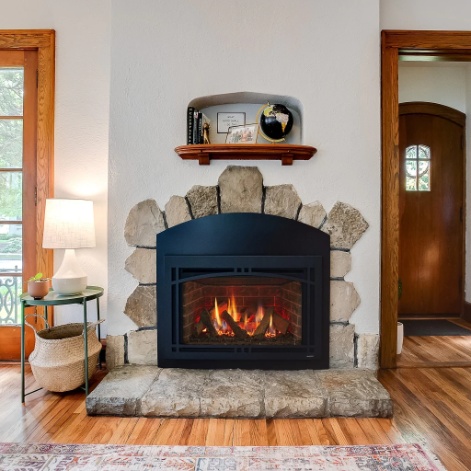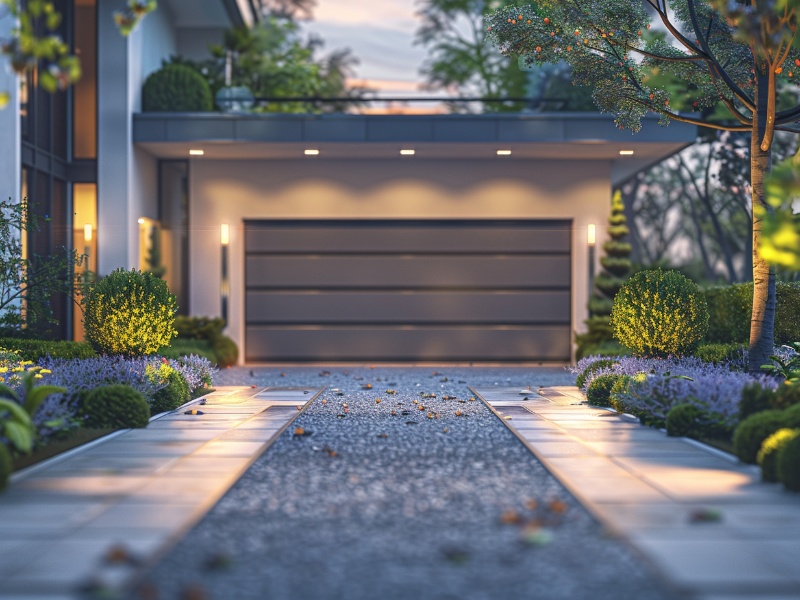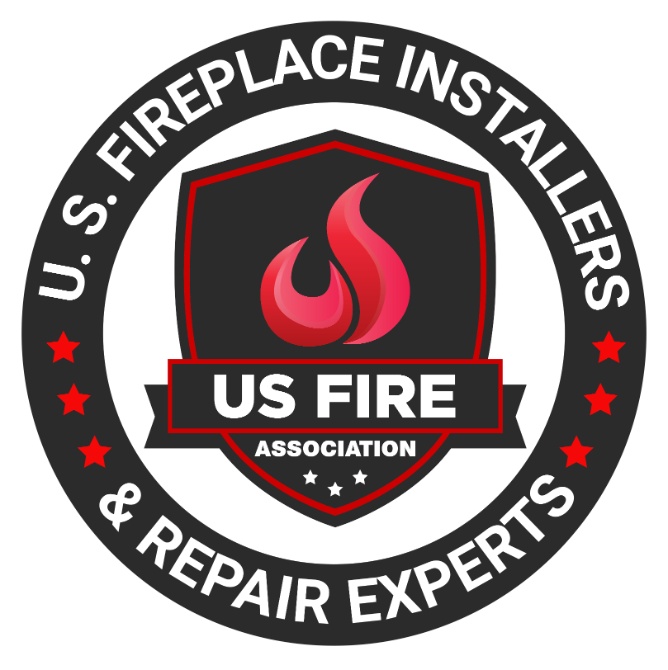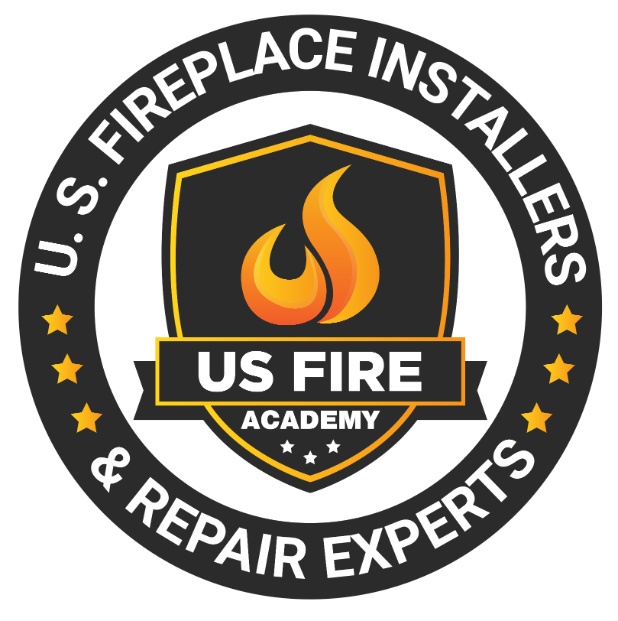Table of Contents
If you are considering acquiring a new fireplace, gas alternatives stand out as a popular choice. Check out our ultimate guide to gas fireplace shopping!
They are renowned for their convenience and efficiency levels.
This comprehensive guide examines the various types of gas fireplaces.
We will focus on the distinctions between ventless versus vented options and insert against built-in models.
Furthermore, we will address crucial factors that merit contemplation prior to finalizing a purchase.
These considerations include cost implications, dimensions, and the requisite maintenance tasks.
Moreover, we will provide guidance on selecting an appropriate gas fireplace for your residence.
This includes an overview of essential characteristics to seek out and recommendations for reputable brands within the market.
Finally, it is imperative not to overlook the importance of heeding advice related to the installation process and adherence to requisite safety precautions.
This ensures a safe and comfortable fireplace experience.
What is a Gas Fireplace?
The utilization of natural gas or propane in a gas fireplace is a prevalent heating method.
It can enhance the indoor ambiance of a residence.
A notable benefit of gas fireplaces is their energy efficiency.
They produce heat rapidly and can be easily regulated using a thermostat or remote control.
By eliminating the necessity of acquiring and storing firewood, gas fireplaces present a convenient and tidy heating solution.
Gas fireplaces provide a diverse array of design possibilities.
These range from conventional styles featuring authentic logs and ember beds to contemporary designs offering customizable flame heights and colors.
This adaptability enables homeowners to personalize the appearance of their fireplace to align with their aesthetic preferences.
Types of Gas Fireplaces
When selecting a gas fireplace, it is advisable to have a comprehensive understanding of the various types available, and to use our ultimate guide to gas fireplace shopping!
This knowledge will enable you to make a well-informed decision that aligns with both your home decor preferences and heating requirements.
Ventless vs. Vented Gas Fireplaces
The selection of a gas fireplace involves a crucial decision between a ventless (vent-free) and vented model.
Each presents distinct advantages and chimney requirements.
Vented gas fireplaces necessitate a venting system to eliminate combustion byproducts outdoors.
This makes them suitable for larger spaces where adequate ventilation is essential.
Conversely, ventless gas fireplaces operate without a chimney.
This facilitates installation in various locations within a residence.
Notably, ventless models are esteemed for their superior heating efficiency.
They do not dissipate heat through a chimney.
However, safety concerns accompany ventless options due to the potential accumulation of indoor air pollutants.
This underscores the importance of considering proper room dimensions and ventilation requirements.
Insert vs. Built-in Gas Fireplaces
When considering the installation of a gas fireplace, it is essential to evaluate whether an insert or a built-in model would best suit your needs.
Each option presents distinct advantages based on your home’s layout and firebox dimensions.
Inserts are particularly well-suited for residences with existing traditional fireplaces.
They can be seamlessly incorporated into the current space.
Available in various sizes to accommodate different firebox dimensions, inserts offer versatility for both small and large areas.
Conversely, built-in gas fireplaces provide a tailored, integrated appearance.
This can serve as a focal point in contemporary home designs.
With typically higher heat output compared to inserts, built-in models are suitable for heating larger rooms or open floor layouts.
When deliberating between the two options, consider the desired aesthetic appeal and heating capacity that align with your specific living space requirements.
Factors to Consider Before Buying
Ahead of completing a purchase, it is imperative to carefully evaluate a range of factors that will impact your selection of a gas fireplace, and to read our ultimate guide to gas fireplace shopping!
This guarantees that it aligns with your requirements and preferences.
Cost and Installation Process
It is imperative to have a comprehensive understanding of the cost and installation procedures associated with gas fireplaces.
This knowledge helps you effectively budget and plan, ensuring a cost-efficient and streamlined experience.
Gas fireplaces are available in a variety of models, with prices ranging from $500 for basic do-it-yourself (DIY) kits to $5,000 or more for premium, professionally installed units.
While the initial cost of DIY kits may appear more economical, engaging professional installers guarantees proper setup and adherence to safety standards.
This typically incurs expenses between $1,000 to $3,000.
Opting for professional installation can also provide additional advantages.
These include assured workmanship quality and the possibility of warranty coverage.
It is advisable to monitor seasonal promotional offers that could potentially reduce overall expenses.
Also, contemplate the acquisition of extended warranties for enhanced peace of mind.
Size and Placement in Your Home
Selecting the appropriate size and positioning of your gas fireplace is vital.
This maximizes its heating efficiency and enriches the indoor ambiance of your residence.
When establishing the suitable dimensions of a gas fireplace for a particular room, consider the square footage and the desired heating potential.
A widely accepted guideline suggests aiming for a fireplace that can generate approximately 5,000 BTUs per hour for every 200 square feet of space.
This computation ensures that the fireplace can effectively heat the room without overwhelming it.
The placement of the gas fireplace holds significant importance in establishing a comfortable setting.
In living areas, position the fireplace as a central focal point.
This elevates the room’s visual appeal and offers warmth to the space where most family activities occur.
Efficiency and Maintenance
The energy efficiency and low maintenance requirements of a gas fireplace are pivotal aspects.
These contribute significantly to its long-term functionality and value.
Gas fireplaces offer a range of features, such as programmable thermostats and adjustable flames.
These features provide convenience and contribute to cost savings over time.
By enabling users to regulate the temperature and flame intensity, these fireplaces ensure effective heating while creating a welcoming ambiance.
To uphold peak performance levels and prolong the lifespan of a gas fireplace, routine cleaning and inspections are imperative.
Tasks such as cleaning the glass, inspecting for potential blockages, and ensuring proper ventilation are essential.
These tasks enhance safety and optimize the fireplace’s operational efficiency.
Choosing the Right Gas Fireplace for Your Home
Selecting the appropriate gas fireplace necessitates careful consideration of a range of features and models, and the use of our ultimate guide to gas fireplace shopping!
These should be in harmony with both your home’s decor and heating requirements.
Important Features to Look For
When selecting a gas fireplace, prioritize features that can improve convenience and functionality.
These features include a remote control and the ability to adjust the flame height.
Additionally, a programmable thermostat should be regarded as a critical feature.
This thermostat allows users to establish specific temperature settings to ensure optimal comfort and energy efficiency.
The incorporation of realistic logs into the fireplace’s design adds a sense of authenticity.
This feature plays a role in creating a warm and inviting atmosphere in any given space.
The amalgamation of these features guarantees user-friendly controls.
It also aids in realizing substantial energy savings over time, enhancing the overall aesthetic appeal of the fireplace.
Top Brands and Models
Researching top brands and models is essential in selecting a gas fireplace.
Look for one that boasts a strong brand reputation and favorable consumer ratings.
Renowned gas fireplace manufacturers such as Napoleon, Heat & Glo, and Majestic offer a diverse array of models.
These are recognized for their innovative features and sophisticated designs.
For example, the Napoleon Vector series is esteemed for its cutting-edge technology and customizable options.
This makes it a sought-after choice among homeowners.
Customers have commended the efficient heating capabilities and elegant aesthetic of Heat & Glo’s SlimLine series.
Additionally, Majestic’s Meridian series has received acclaim for its lifelike flames and user-friendly installation procedure.
This combination of functionality and elegance is highly regarded.
Installation and Safety Tips
The correct installation and adherence to safety standards are imperative.
This guarantees the safe and effective functioning of your gas fireplace.
Professional Installation vs. DIY
The choice between professional installation from Dreifuss Fireplaces and a do-it-yourself (DIY) approach hinges on your skill level and the intricacy of the installation process.
Dreifuss professional installation presents the advantage of specialized knowledge and precision.
This ensures that the task is executed correctly and efficiently.
While this option may entail a higher cost and necessitate scheduling appointments, it offers the assurance of a professionally completed job.
Conversely, DIY projects afford a sense of achievement and potential cost savings.
They enable individuals to progress at their own pace.
It is important to note that certain tasks, such as electrical work or plumbing, should be entrusted to professionals.
This is for reasons pertaining to safety and regulatory compliance.
To facilitate the decision-making process, a straightforward installation guide has been provided below.
This outlines the sequential steps involved in a typical project.
Safety Precautions and Maintenance
Adhering to safety precautions and conducting regular maintenance are imperative.
This ensures the longevity and safe operation of a gas fireplace.
It is essential to have carbon monoxide detectors installed in close proximity to the fireplace.
This facilitates the early detection of any potential leaks.
Furthermore, scheduling annual professional inspections is crucial.
These inspections assess gas leaks, proper ventilation, and overall functionality.
This helps prevent hazardous situations.
Performing routine tasks such as cleaning the glass doors, inspecting for debris in the vents, and maintaining a clean pilot light can contribute significantly.
These tasks enhance the efficient operation of a gas fireplace.
Furthermore, troubleshooting procedures like checking the batteries in the remote control and adjusting thermostat settings can effectively address common issues.
This helps maintain the fireplace in optimal condition.
Frequently Asked Questions
1. What is a gas fireplace and how does it work?
A gas fireplace is an alternative to a traditional wood-burning fireplace. It uses natural gas or propane to provide heat and a flame. A gas fireplace works by igniting the gas and creating a fire that is controlled by a thermostat or remote control.
2. What are the benefits of choosing a gas fireplace over a wood-burning fireplace?
Gas fireplaces offer a cleaner, more convenient, and efficient alternative to wood-burning fireplaces. They require less maintenance, produce less smoke and ash, and can be easily turned on and off with a remote control. They also provide a consistent, adjustable heat source.
3. What factors should I consider when shopping for a gas fireplace?
When shopping for a gas fireplace, consider the size and layout of your space. Also, think about the type of fuel you prefer (natural gas or propane). Consider the level of heat output you desire and the style and design of the fireplace to match your home’s aesthetic.
4. How do I know what size gas fireplace to get for my home?
The size of a gas fireplace is determined by the heat output, measured in BTUs (British Thermal Units). To determine the right size for your home, consider the square footage you need to heat and consult with a professional. It’s also important to ensure proper ventilation for the size of the fireplace.
5. What is the installation process for a gas fireplace?
The installation process for a gas fireplace will vary depending on the type and model of fireplace you choose. It’s important to have a professional handle the installation to ensure safety and proper functioning. The installation may involve running a gas line, venting, and securing the fireplace in place.
6. Are there any safety precautions I should take when using a gas fireplace?
Yes, it’s important to follow safety precautions when using a gas fireplace. Make sure to have a carbon monoxide detector installed in the same room as the fireplace and have it inspected annually. It’s also important to have a professional perform regular maintenance. Avoid leaving the fireplace unattended or using it for cooking.
7. What is the difference between vented and ventless gas fireplaces?
Vented gas fireplaces require a chimney or flue to expel combustion byproducts outdoors, making them suitable for larger spaces with good ventilation. Ventless gas fireplaces do not need a venting system, allowing for more flexible installation, but they can lead to indoor air quality concerns.
8. Can I install a gas fireplace myself?
While some homeowners may choose to install a gas fireplace themselves, it is highly recommended to hire a professional. Proper installation requires knowledge of gas lines, venting, and local building codes to ensure safety and compliance.
9. How can I maintain my gas fireplace?
To maintain your gas fireplace, perform routine tasks such as cleaning the glass doors, inspecting for blockages in the vents, and ensuring the pilot light is clear. It’s also a good idea to schedule annual inspections with a professional to identify potential safety hazards.
10. What are some reputable brands for gas fireplaces?
Reputable gas fireplace brands include Napoleon, Heat & Glo, and Majestic. These manufacturers are known for their quality and variety of models, offering features that enhance both efficiency and design.
Latest Articles

What Is An NG (Natural Gas) Indicator And Why You Need It For Your Fireplace
Table of Contents1 Understanding Natural Gas Fireplaces2 What is an NG Indicator?3 Importance of NG Indicators for Safety4 Types of NG Indicators5 Installation and Maintenance of NG Indicators6 Signs of a Faulty NG Indicator7 Frequently Asked Questions Natural gas fireplaces are a favored option among numerous homeowners due to their convenience and effectiveness. But, what is an NG (Natural Gas) indicator and why you need it for your fireplace? It is imperative to comprehend how they function and the significance of having an NG (Natural Gas) indicator for safety purposes. This article delves into the definition and significance of NG indicators. We will discuss the potential hazards associated with the absence of one and the various types of indicators accessible. Also, we will discuss installation and maintenance recommendations, and methods to recognize and rectify issues with malfunctioning indicators. Stay well-informed and ensure the safety of your home by referring to this exhaustive guide. Understanding Natural Gas Fireplaces Natural gas fireplaces serve as an efficient and convenient heating option for numerous households. They utilize natural gas as a fuel source to deliver consistent warmth and ambiance. How They Work and Why They Need NG Indicators The operation of natural gas fireplaces involves igniting natural gas to generate heat. This process requires diligent monitoring to ensure both safety and efficiency, a task facilitated by the use of NG indicators. NG indicators play a critical role in detecting potential gas leaks. They enable residents to promptly address and mitigate any associated hazards. Through continuous monitoring of gas levels and providing timely warnings and alerts, NG indicators uphold a secure indoor environment. It is imperative to ensure that these indicators function properly to facilitate the effective operation of natural gas fireplaces. This helps mitigate the inherent risks linked to gas leaks. What is an NG Indicator? An NG indicator is a specialized device equipped with advanced sensors and technology. It is specifically designed to detect natural gas leaks and monitor gas pressure in appliances, such as fireplaces. Definition and Purpose The NG indicator functions as a detector that monitors gas appliances for potential leaks. It provides essential functionality to ensure safety in households utilizing natural gas. These detectors play a crucial role in protecting residences by notifying occupants of dangerous gas leaks long before they escalate into perilous situations. Through continuous monitoring of gas levels in the vicinity, NG indicators offer an additional layer of protection. This is particularly important in properties that rely on gas-operated fireplaces or stoves. These devices not only help avert potential disasters but also enhance the overall peace of mind of homeowners. They assure them that their living spaces are equipped with reliable safety features. Importance of NG Indicators for Safety Natural gas indicators are essential for maintaining safety in households equipped with natural gas appliances. These devices serve as a proactive measure to promptly detect gas leaks. This offers homeowners a sense of security and assurance. Potential Dangers of Not Having an NG Indicator The absence of an NG indicator in residences equipped with natural gas appliances can pose significant hazards. This includes the risk of undetected gas leaks , carbon monoxide poisoning , and pilot outages that may lead to dangerous situations. These potential risks can profoundly impact indoor air quality. They directly influence the health and safety of individuals residing in the household. Undetected gas leaks can go unnoticed, gradually permeating the air and creating a potentially explosive environment. Insufficient ventilation from undetected exposure to carbon monoxide can lead to serious health complications. These range from mild symptoms such as dizziness to fatal poisoning. Without proper monitoring from an NG indicator, families are left susceptible to these concealed threats. This underscores the critical importance of implementing proactive measures to mitigate such risks. Types of NG Indicators Indicators for Natural Gas (NG) are available in diverse types. Each presents distinct detection capabilities tailored to specific requirements, encompassing both manual and automated alternatives. Manual vs. Automatic Indicators Manual NG indicators require user intervention for monitoring gas levels and identifying leaks. On the other hand, automatic indicators employ sophisticated technology to deliver continuous, real-time monitoring. This heightened efficiency and oversight enhance safety protocols. Conventional manual indicators rely on individuals to physically inspect and evaluate gas levels periodically. This renders them more susceptible to human errors. Conversely, automatic indicators feature sensors capable of promptly detecting even the most minute fluctuations in gas levels. This establishes a more dependable and precise monitoring mechanism. Automatic indicators can activate alerts and shut-off systems upon detecting a leak. This ensures immediate action to avert potential hazards. This advanced technology enhances safety protocols and instills a sense of command and assurance among users. Installation and Maintenance of NG Indicators The reliable and accurate performance of NG indicators necessitates proper installation and consistent maintenance. This often entails professional installation and adherence to recommended service guidelines. Proper Installation and Regular Maintenance Tips The proper installation of NG indicators involves adhering to the specifications in the user manual. Maintenance protocols entail strict adherence to a predetermined maintenance schedule to ensure sustained operational efficiency. During the installation phase, it is imperative to verify that the NG indicators are securely affixed in the designated location as stipulated by the manufacturer. Crucial steps include confirming power source compatibility and ensuring proper grounding of the device to optimize performance. Calibration of the indicator must be executed meticulously to ensure precise readings. Regarding maintenance, essential practices include regular inspection for signs of wear, thorough cleaning of the indicator components, and routine functionality tests. By allocating time to a consistent maintenance regimen, the NG indicator can operate with optimal efficiency over an extended duration. Signs of a Faulty NG Indicator Recognizing indicators of a malfunctioning NG indicator is essential for upholding safety and performance standards. Inaccuracies and detection issues can undermine the efficacy of these devices. Identifying and Addressing Issues The process of identifying and addressing issues related to NG (natural gas) indicators requires a systematic troubleshooting approach. This ensures their optimal performance

What You Need To Know About Gas Log Set Safety And Installation Considerations
Table of Contents1 Understanding Gas Log Sets2 Safety Considerations for Gas Log Sets3 Installation Guidelines for Gas Log Sets4 Maintaining and Troubleshooting Gas Log Sets5 Frequently Asked Questions Gas log sets are a favored option among homeowners seeking to enjoy the comfort and atmosphere of a conventional fireplace without the inconvenience of wood. This article tells you what you need to know about gas log set safety and installation considerations. Before incorporating one into your residence, it is imperative to understand the safety considerations associated with their use. This discussion delves into the potential hazards linked with gas log sets. It presents crucial precautions to uphold the safety of your home. Also, it outlines proper installation procedures and offers insight into common errors to avoid. Finally, it provides advice on maintenance and troubleshooting. Gain comprehensive knowledge on gas log set safety and installation considerations. Understanding Gas Log Sets Comprehending gas log sets is essential for individuals seeking to elevate their fireplace experience, and for gas lag set safety and installation. These heating appliances can operate on either natural gas or propane. In addition, they are available in a range of styles, including vented, ventless, and vent-free options. They provide an array of benefits and customization opportunities through various fireplace accessories. What are Gas Log Sets? Gas log sets are meticulously crafted artificial logs. They are designed to imitate the appearance and functionality of authentic wood logs within fireplaces. These gas log sets typically consist of ceramic or refractory concrete logs that have been skillfully molded and painted. This allows them to replicate the natural grain and texture of real wood. The logs are arranged in various configurations within the fireplace. They establish a realistic and welcoming ambiance. In addition to the logs, gas log sets often include fireplace accessories such as glowing embers. Accessories also include decorative stones, and even pine cones to enhance the overall aesthetic appeal. Homeowners can select from an array of placement options. These include traditional wood stack, cascading driftwood, or a contemporary geometric arrangement. Homeowners can align their preferred style and design preferences. Safety Considerations for Gas Log Sets Safety considerations for gas log sets are of utmost importance to guarantee a secure and pleasant fireplace experience. It is essential to address potential hazards such as carbon monoxide exposure, gas leaks, and fire safety to maintain a safe environment for homeowners. Potential Hazards and Precautions Gas log sets come with potential hazards that must be taken seriously, including the risks of gas leaks, carbon monoxide poisoning, and fire incidents. It is imperative to establish and adhere to rigorous safety measures to ensure the well-being of individuals and properties involved in the use of gas log sets. Gas leaks represent a significant hazard when utilizing gas log sets. They can result in the accumulation of combustible gas within the premises, heightening the possibility of explosions or fires. Carbon monoxide, an insidious gas generated during incomplete combustion, poses a grave threat due to its colorless and odorless nature, making it undetectable without proper monitoring. To address these risks effectively, it is vital to install carbon monoxide detectors and gas leak sensors in the vicinity of the gas logs. Routine maintenance checks on the gas log system, including cleaning and inspection procedures, are critical to ensure safe operations and the prompt identification of potential issues. In case of a gas leak or suspected presence of carbon monoxide, immediate evacuation of the affected area is paramount, followed by prompt contact with emergency services. Recognizing the distinct odor of rotten eggs associated with natural gas can serve as an early warning sign, prompting swift actions to avert any potential accidents. Installation Guidelines for Gas Log Sets The installation of a gas log set necessitates meticulous planning and strict adherence to specific guidelines. This includes verifying a secure gas connection, ensuring proper gas lines are in place, and complying with local building codes. Often, the complexity of these requirements may require the expertise of a certified technician. Proper Installation Techniques The appropriate installation procedures for gas log sets involve the secure connection of gas lines, meticulous adherence to installation manuals, and strict compliance with local building codes. It is imperative to prioritize the guarantee of secure gas connections to avert leaks and potential safety hazards. During the installation of gas log sets, utilizing suitable sealants and fittings is essential to establish a tightly sealed connection. The correct installation of gas lines is critical for both the safety and operational efficacy of the gas log set. Reference to the installation manual is highly advisable for detailed, step-by-step guidance to prevent inaccuracies and ensure the successful establishment of the gas log set. Consistently adhering to building codes and regulations upholds safety standards. Seeking guidance and confirmation from a certified technician before and after installation can offer invaluable support and assurance throughout the process. Common Installation Mistakes to Avoid It is imperative to avoid common installation errors to ensure the secure and effective operation of gas log sets. This includes verifying proper gas connections and compliance with building codes. Improper gas connections can result in leaks and potential hazards, underscoring the importance of verifying the tightness and correct alignment of all fittings. Failure to adhere to building codes can lead to structural complications, penalties for non-compliance, or even safety concerns. To prevent these oversights, it is advised to consult the manufacturer’s installation guidelines and strictly adhere to local regulations. Engaging a certified technician for the installation of gas log sets guarantees that the procedure is carried out accurately and securely. This provides assurance that the system is functioning as intended. Maintaining and Troubleshooting Gas Log Sets Regular maintenance and troubleshooting of gas log sets are imperative to uphold their optimal performance and safety. This includes thorough examination of the pilot light, pilot assembly, and other gas appliances to preserve heating efficiency and promptly resolve any arising issues. Tips for Maintenance and Repair Ensuring the proper maintenance of your gas log set necessitates conducting

Key Considerations For Using Compressed Liquid Propane In Fireplace Installation
Table of Contents1 What is Compressed Liquid Propane?2 Benefits of Using Compressed Liquid Propane in Fireplaces3 Safety Precautions for Installing Compressed Liquid Propane Fireplaces4 Installation Process for Compressed Liquid Propane Fireplaces5 Maintenance and Care for Compressed Liquid Propane Fireplaces6 Alternative Fuel Options for Fireplaces7 Frequently Asked Questions If you are contemplating the use of compressed liquid propane in your fireplace installation, this discussion will delve into the advantages of adopting this alternative fuel option. These benefits include enhanced efficiency, cost savings, and important safety precautions to consider. Furthermore, a detailed step-by-step guide on the installation process will be provided, along with recommendations for maintenance and care. A comparison of various fuel options for fireplaces will also be conducted to assist you in making an informed decision. We encourage you to stay engaged to gain insights into optimizing your fireplace’s capabilities with compressed liquid propane. What is Compressed Liquid Propane? Compressed Liquid Propane is a versatile energy source contained in a high-pressure propane tank. It finds extensive utility in both residential and commercial settings, prominently including fireplaces. Recognized for its convenience and efficiency, Compressed Liquid Propane emerges as a favored option for heating residential spaces and facilitating culinary pursuits across various environments. Additionally, it serves as a viable fuel substitute in vehicular contexts, portable cooktops, and outdoor grilling scenarios due to its propensity for clean combustion. The attribute of portability, coupled with ease of storage, positions Compressed Liquid Propane as an optimal energy source for individuals residing off the conventional grid. It is also great for engaging in outdoor activities such as camping and recreational vehicle (RV) travel. Moreover, the high energy density inherent to Compressed Liquid Propane renders it a dependable choice for sustaining generators during instances of power disruptions. Benefits of Using Compressed Liquid Propane in Fireplaces Utilizing Compressed Liquid Propane for fireplace installation presents several benefits. These include enhanced fuel efficiency, convenience, cost-effectiveness, and a favorable environmental footprint. These attributes render it a recommended option for heating solutions, applicable to both on-grid and off-grid settings. Efficiency and Cost Savings The utilization of Compressed Liquid Propane in fireplaces offers significant advantages, notably in terms of high fuel efficiency and cost-effectiveness. These attributes are underscored by the exceptional BTU rating and overall heating efficiency of Compressed Liquid Propane. The elevated fuel efficiency exhibited by Compressed Liquid Propane fireplaces necessitates less fuel to generate the same level of heat compared to traditional wood-burning fireplaces or electric heating systems. Consequently, homeowners can realize cost savings on their heating expenditures over an extended period. Moreover, the clean-burning characteristics of propane minimize maintenance costs linked to soot and ash cleanup. This further enhances the cost-effectiveness of employing propane fireplaces. Safety Precautions for Installing Compressed Liquid Propane Fireplaces Ensuring safety is of utmost importance during the installation of Compressed Liquid Propane fireplaces. This requires strict adherence to safety regulations, meticulous attention to proper ventilation requirements, careful control of ignition sources, and the incorporation of carbon monoxide and gas leak detection systems. Important Safety Measures Essential safety protocols for the installation of Compressed Liquid Propane fireplaces encompass adherence to fire safety regulations. Engaging in professional assessments and employing sophisticated gas leak and carbon monoxide detection mechanisms is crucial. Professional evaluations play a critical role in identifying any prospective hazards or irregularities within the fireplace infrastructure. These assessments are vital in ensuring the operational integrity of all components and compliance with safety protocols. Routine inspections serve to forestall potential fire incidents, gas discharges, or carbon monoxide emissions that could pose significant threats to both the property and individuals in the vicinity. The utilization of advanced gas leak and carbon monoxide detection systems serves as an additional safeguard by promptly notifying occupants of any elevated levels of these hazardous gases. Installation Process for Compressed Liquid Propane Fireplaces The installation procedure for Compressed Liquid Propane fireplaces encompasses several critical steps. These include: Adhering to installation guidelines Correctly positioning the propane tank Ensuring precise gas line installation Optimizing heat output Monitoring pressure regulation Establishing the pilot light Step-by-Step Guide The installation process of Compressed Liquid Propane fireplaces involves a systematic approach. This begins with the construction of the firebox, followed by the installation of the gas control valve, setup of the ignition system, design of the flue, and verification of a suitable combustion air supply. The construction of the firebox assumes critical importance as it serves as the foundation of the fireplace structure. It securely holds the combustible materials in place. Subsequently, the gas control valve plays a key role in managing the propane flow, guaranteeing safe and efficient operation. The installation of the ignition system facilitates convenient and reliable fire initiation. Designing the flue is a necessary step to direct exhaust gases outside, thus preventing their accumulation indoors. Moreover, ensuring a proper combustion air supply is essential to sustain optimal burning conditions and enhance fuel consumption efficiency. Each component contributes significantly to the functionality and safety of the fireplace installation process. This underscores the importance of meticulous attention to detail and adherence to established protocols. Maintenance and Care for Compressed Liquid Propane Fireplaces Consistent maintenance and attention to Compressed Liquid Propane fireplaces are imperative to guarantee their optimal functionality. This includes adherence to prescribed maintenance protocols, regular chimney upkeep, prevention of soot accumulation, and scheduling of routine propane deliveries and professional inspections. Tips for Keeping Your Fireplace in Good Condition For the maintenance of your Compressed Liquid Propane fireplace, it is essential to conduct regular checks on ignition sources. Monitor flame appearance, clean the gas burner and pilot assembly, and verify the correct operation of the safety shut-off valve. The inspection of ignition sources requires a detailed examination of the electronic igniter. This helps identify any signs of damage or corrosion and ensures proper sparking upon activation. Monitoring flame appearance involves observing a consistent blue flame with minimal flickering, which signifies efficient combustion. Cleaning the gas burner and pilot assembly can be performed using a soft brush or compressed air to eliminate any dirt or debris that may
